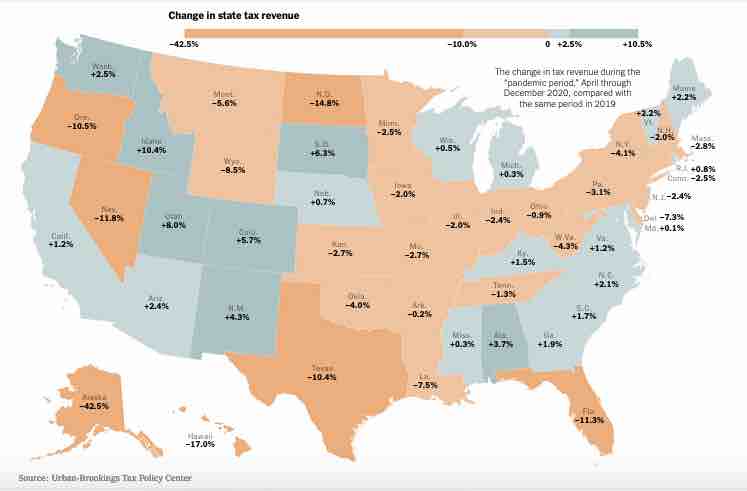Throughout the debate over stimulus measures, one question has repeatedly brought gridlock in Washington: Should the states get no-strings federal aid?
Republicans have mostly said no, casting it as a bailout for spendthrift blue states. Democrats have argued the opposite, saying that states face dire fiscal consequences without aid, and included $350 billion in relief for state and local governments in President Biden’s $1.9 trillion federal stimulus bill, which narrowly passed the House this past weekend. It faces a much tougher fight in the Senate.
As it turns out, new data shows that a year after the pandemic wrought economic devastation around the country, forcing states to revise their revenue forecasts and prepare for the worst, for many the worst didn’t come. One big reason: $600-a-week federal supplements that allowed people to keep spending — and states to keep collecting sales tax revenue — even when they were jobless, along with the usual state unemployment benefits.
By some measures, the states ended up collecting nearly as much revenue in 2020 as they did in 2019. A J.P. Morgan survey called 2020 “virtually flat” with 2019, based on the 47 states that report their tax revenues every month, or all except Alaska, Oregon and Wyoming.
A researcher at the Urban-Brookings Tax Policy Center, a nonpartisan think tank, found that total state revenues from April through December were down just 1.8 percent from the same period in 2019. Moody’s Analytics used a different method and found that 31 states now had enough cash to fully absorb the economic stress of the pandemic recession on their own.
“You can see it’s just a completely different story this time,” said Louise Sheiner, a Brookings Institution economist whose research showed that over all, the states struggled far less during the pandemic than in previous recessions.




